Ahead of incoming president William Lai’s (賴清德) inauguration on May 20 there appear to be signs that he is signaling to the Chinese Communist Party (CCP) and that the Chinese side is also signaling to the Taiwan side. This raises a lot of questions, including what is the CCP up to, who are they signaling to, what are they signaling, how with the various actors in Taiwan respond and where this could ultimately go.
In the last column, published on May 2, we examined the curious case of Democratic Progressive Party (DPP) heavyweight Cheng Wen-tsan (鄭文燦) — currently vice premier and name frequently raised as a potential premier or presidential candidate — who accepted a huge demotion to run the Straits Exchange Foundation (SEF), which is a quasi-private organization tasked with representing Taiwan’s Mainland Affairs Council (MAC) in any actual meetings with Beijing to get around the two governments not officially talking to each other. Since President Tsai Ing-wen (蔡英文) came to office, the CCP cut off all contact with the SEF over Tsai’s stance on the so-called “1992 consensus,” effectively rendering the SEF irrelevant.
In summary, while there is a possibility this is an internal DPP power play by Lai, it seems more likely that Lai is signaling to the CCP that he is willing to reopen communications and that by placing one of the most powerful figures in the DPP who has the ear of the top leadership, he is serious. That Cheng took the job suggests there is something significant going on, and Lai campaigned on reopening talks with China.
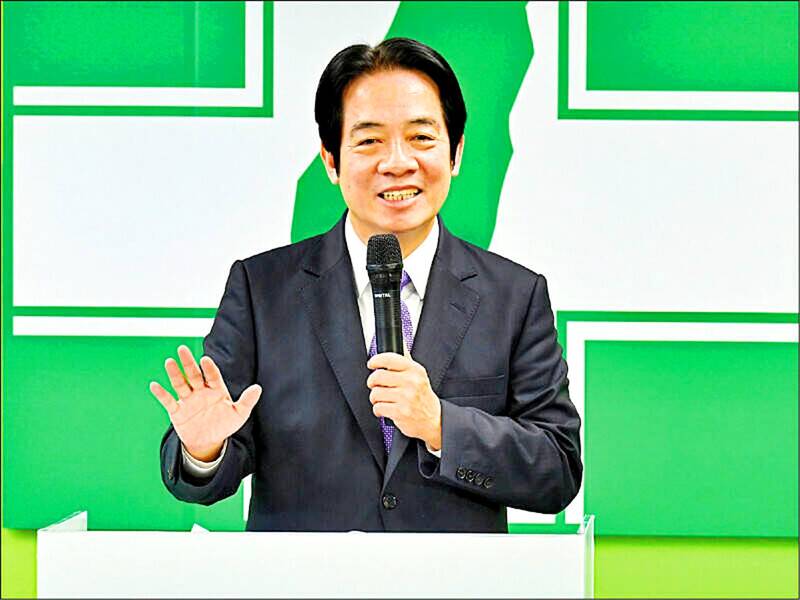
Photo: Taipei Times, file photo
THE WANG HUNING ANGLE
At the 20th Party Congress of the CCP in October of 2022, Wang Huning (王滬寧) was promoted to the fourth-ranked position in the CCP Politburo Standing Committee (PSC). This position puts him in charge of the CCP United Front Work Department (UFWD), in the chair position of the Chinese People’s Political Consultative Conference (CPPCC) and deputy chair of the CCP Central Leading Small Group for Taiwan Work, which is the second highest position in charge of Taiwan policy after only President Xi Jinping (習近平).
Wang has been known as one of the top ideological thinkers in the CCP and is probably best known in the US as the author of America Against America, which some consider an influential look in China on American culture, society and economy. In Taiwan, he is possibly known the most for being the “three dynasty imperial teacher” (三朝帝師) who has been involved in crafting the messaging and ideological underpinnings of three successive CCP leaders and has remarkably survived the court purges that happen when a new leader entrenches power.
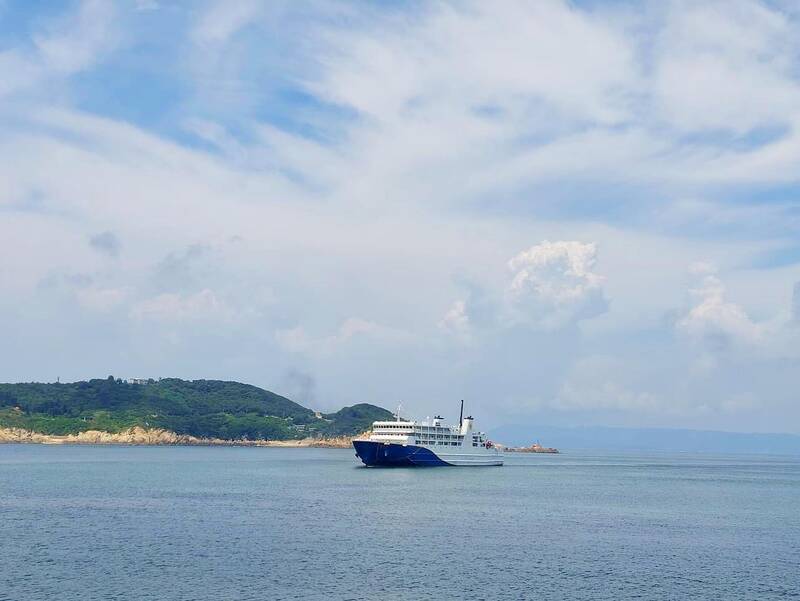
Photo courtesy of the DPP
In the spring of last year, starting in a piece in Nikkei Asia but spreading to other outlets, there was considerable speculation that he was being tasked with formulating a new ideological framework and approach for unification with Taiwan, possibly even going so far as to replace the Deng Xiaoping (鄧小平) era “One Country, Two Systems,” which is deeply unpopular in Taiwan. China analysts watched and analyzed anything and everything that could provide some insight into what, if anything, Wang might do to change CCP strategy on Taiwan.
Not much changed. It appeared that Wang was simply doubling down on the strategies they have been pursuing since the late 2010s.
INTENSIFYING SCALE SIGNIFICANT
There are now indications changes are afoot on the Chinese side, though it is too early to know how significant and sweeping they might be. They are only just beginning to tip their hand, and if there are significant changes coming they will likely play out their strategy over some time and taking into account actions by the Taiwanese side as well as other stakeholders, including the US and Japan.
That this is happening in the run-up to Lai’s inauguration is almost certainly no accident. There appear to be both carrot and stick elements to their messaging, which appears to carry the message that there are both costs and benefits to be had through communication.
So far none of the changes are exactly new, but the intensifying scale is telling. For example, the Chinese side had made a change to the M503 flight path once previously in the Taiwan Strait without consulting the Taiwan side as they did in 2015, but this time they not only moved it closer to the median line between the two sides, they created three new flight paths, including one only 1.1 nautical miles from Kinmen County airspace and another 2.8 nautical miles south of Matsu airspace. All these changes are dangerously close and the chances for accidents to occur are alarming.
Also not new are tensions around Kinmen, but following a Chinese speedboat accident as Taiwan’s Coast Guard was chasing them out of Taiwan’s water things have escalated significantly. Beijing increased patrols around Kinmen and brought them in much closer, boarded and inspected a Taiwanese tourist boat and has been holding a Taiwanese fisherman they claim is a member of Taiwan’s military.
Also escalating and closing in is the recent high numbers of incursions by the CCP’s armed wing, the People’s Liberation Army Air Force (PLAAF) and Navy (PLAN) into Taiwan’s air defense identification zone (ADIF), including incursions as close as 41 nautical miles away from Keelung’s naval base, rattling Taiwan and setting off alarm bells. There have still been no incursions in Taiwan’s legal airspace, but the chances that they accidentally do or have a collision with a Taiwanese air force vessel are rising significantly. Both have the potential to lead to armed conflict.
OUTSIZED REWARD
Late last month, Chinese Nationalist Party (KMT) caucus convener Fu Kun-chi (傅?萁 aka the “King of Hualien”) led a delegation of 17 party lawmakers, or about one-third of the party caucus, to visit China. Wang met with the delegation in a setting often reserved for state visits.
With previous KMT delegations, the CCP would sometimes “reward” the KMT by lifting some import restrictions on Taiwanese products, usually one or two agricultural products, but not significant in the overall economic picture but carrying some symbolic weight. Not this time.
Not only were import restrictions to be dropped for 16 products, the Beijing announced plans to revive cross-strait tourism, which it cut off to show displeasure with the Tsai administration and to deal her an economic blow. In one year between 2015 and 2016, Taiwan’s tourism revenue dropped from US$14.39 billion to US$10.37 as Chinese tourism dried up.
However, by 2019 tourism revenues had been restored to US$14.41 billion due to increasing Japanese and Southeast Asian tourism in particular, and reached US$14.89 billion in 2022 post-pandemic. Anecdotally, there has been speculation that tourists from these countries increased their tourism to Taiwan in part due to the absence of Chinese tourists.
Initially the CCP has indicated it will act swiftly to begin tourism between Fujian and Matsu, but called on the Taiwan “authorities” to resume ferry traffic route between Pingtan Island, Fujian and Taiwan itself, to revive many of the 30 direct flight routes that have withered in recent years between the two sides, and announced a pilot program where Chinese in 20 cities will be able to apply for exit and entry documents for Chinese to travel to Taiwan online. MAC Minister Chiu Tai-san (邱太三) said Taiwan welcomes Chinese tourists. If the CCP follows through on lifting restrictions on outbound tourism to Taiwan, this could potentially mean billions in inbound revenue for Taiwan.
Why tourism? It might be significant that Wang Huning is in charge of the United Front Work Department. It is far easier to recruit spies, subvert local elites, reconnect with underworld figures and temples and plant potential saboteurs with thousands of Chinese operating openly in Taiwan.
THE BIG QUESTION
The big unanswered question is who is the CCP planning to communicate with and under what formula.
If they are planning to communicate via the quasi-private organizations previously used, Taiwan’s SEF and China’s equivalent Association for Relations Across the Taiwan Straits (ARATS), then some workaround would need to be found on the issue of the CCP’s insistence on the “1992 consensus.”
The other possibility could be that the CCP is planning to in essence use the KMT to replace the SEF and use the KMT’s legislative plurality in concert with the Taiwan People’s Party (TPP), effectively driving a dangerous wedge into Taiwan’s politics.
We will examine those two possibilities and potential dangers ahead in an upcoming deep dive.
Donovan’s Deep Dives is a regular column by Courtney Donovan Smith (石東文) who writes in-depth analysis on everything about Taiwan’s political scene and geopolitics. Donovan is also the central Taiwan correspondent at ICRT FM100 Radio News, co-publisher of Compass Magazine, co-founder Taiwan Report (report.tw) and former chair of the Taichung American Chamber of Commerce. Follow him on X: @donovan_smith.

Sept. 1 to Sept. 7 In 1899, Kozaburo Hirai became the first documented Japanese to wed a Taiwanese under colonial rule. The soldier was partly motivated by the government’s policy of assimilating the Taiwanese population through intermarriage. While his friends and family disapproved and even mocked him, the marriage endured. By 1930, when his story appeared in Tales of Virtuous Deeds in Taiwan, Hirai had settled in his wife’s rural Changhua hometown, farming the land and integrating into local society. Similarly, Aiko Fujii, who married into the prominent Wufeng Lin Family (霧峰林家) in 1927, quickly learned Hoklo (commonly known as Taiwanese) and
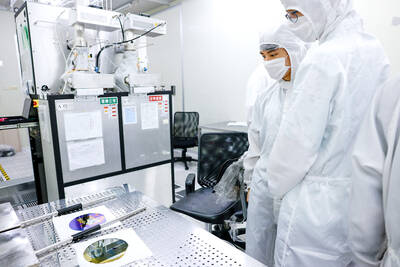
The low voter turnout for the referendum on Aug. 23 shows that many Taiwanese are apathetic about nuclear energy, but there are long-term energy stakes involved that the public needs to grasp Taiwan faces an energy trilemma: soaring AI-driven demand, pressure to cut carbon and reliance on fragile fuel imports. But the nuclear referendum on Aug. 23 showed how little this registered with voters, many of whom neither see the long game nor grasp the stakes. Volunteer referendum worker Vivian Chen (陳薇安) put it bluntly: “I’ve seen many people asking what they’re voting for when they arrive to vote. They cast their vote without even doing any research.” Imagine Taiwanese voters invited to a poker table. The bet looked simple — yes or no — yet most never showed. More than two-thirds of those
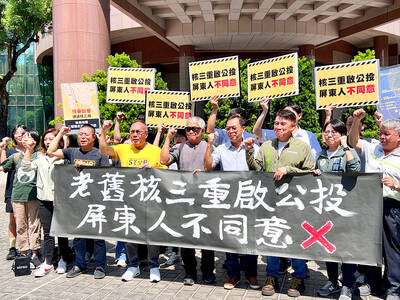
In the run-up to the referendum on re-opening Pingtung County’s Ma-anshan Nuclear Power Plant last month, the media inundated us with explainers. A favorite factoid of the international media, endlessly recycled, was that Taiwan has no energy reserves for a blockade, thus necessitating re-opening the nuclear plants. As presented by the Chinese-language CommonWealth Magazine, it runs: “According to the US Department of Commerce International Trade Administration, 97.73 percent of Taiwan’s energy is imported, and estimates are that Taiwan has only 11 days of reserves available in the event of a blockade.” This factoid is not an outright lie — that
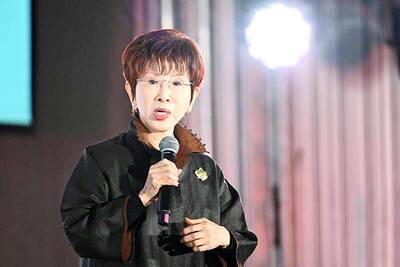
Former Chinese Nationalist Party (KMT) chairwoman Hung Hsiu-chu’s (洪秀柱) attendance at the Chinese Communist Party’s (CPP) “Chinese People’s War of Resistance Against Japanese Aggression and the World Anti-Fascist War” parade in Beijing is infuriating, embarrassing and insulting to nearly everyone in Taiwan, and Taiwan’s friends and allies. She is also ripping off bandages and pouring salt into old wounds. In the process she managed to tie both the KMT and the Democratic Progressive Party (DPP) into uncomfortable knots. The KMT continues to honor their heroic fighters, who defended China against the invading Japanese Empire, which inflicted unimaginable horrors on the